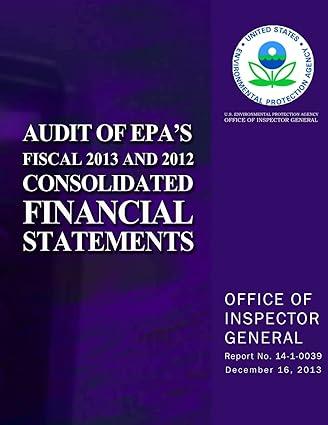Question
Zanda Drug Corporation buys three chemicals that are processed to produce two types of analgesics used as ingredients for popular over the counter drugs. The
Zanda Drug Corporation buys three chemicals that are processed to produce two types of analgesics used as ingredients for popular over the counter drugs. The purchased chemicals are blended for two or three hours and then heated for 15 minutes. The results of the process are two separate analgesics, depryl and pencol, which are sent to a drying room until their moisture content is reduced to 6 to 8%. For every 1,300 pounds of chemicals used, 600 pounds of depryl and 600 pounds of pencol are produced. After drying, depryl and pencol are sold to companies that process them into their final form. The selling prices are $12 per pound for depryl and $30 per pound for pencol. The costs to produce 600 pounds of each analgesic are as follows:
Chemicals $8,500
Direct Labor $6,735
Overhead $9,900
The analgesics are packaged in 20-pound bags and shipped. The cost of each bag is $1,30. Shipping costs $0.10 per pound.
Zanda could process depryl further by grinding it into a fine powder and then molding the powder into tablets. The tablets can be sold directly to retail drug stores as a generic brand. If this route were taken, the revenue received per bottle of tablets would be $4.00, with 10 bottles produced by every pound of depryl. The costs of grinding and tableting total $2.50 per pound of depryl. Bottles cost $0.40 each. Bottles are shipped in boxes that hold 25 bottles at a shipping cost of $1.60 per box.
1: Should Zanda sell depryl at split off, or should depryl be processed and sold as tablets?
2: If Zanda normally sells 265,000 pounds of depryl per year, what will be the difference in profits if depryl is processed further?
P13-42:
AudioMart is a retailer of radios, stereos, and televisions. The store carries two portable sound systems that have radios, tape players, and speakers. System A, of slightly higher quality than System B, cost $20 more. With rare exceptions, the store also sells a headset when a system is sold. The headset can be used with either system. Variable costing income statements for the three products follow:
System A System B Headset
Sales $45,000 $32,500 $8,000
Less: Variable expenses $20,000 $25,500 $3,200
Contribution Margin $25,000 $7,000 $4,800
Less: Fixed costs $10,000 $18,000 $2,700
Operating income $15,000 ($11,000) $2,100
The owner of the store is concerned about the profit performance of System B and is considering dropping it. If the product is dropped, sales of System A will increase by 30%, and sales of headsets will drop by 25%.
1: Prepare segmented income statements for the three products using a better format.
2: Prepare segmented income statements for System A and the headsets assuming that System B is dropped. Should be B dropped?
3: Suppose that third system, System C, with a similar quality to System B, could be acquired. Assume that with C the sales of A would remain unchanged; however, C would produce only 80% of the revenues of B, and sales of the headsets would drop by 10%. The contribution margin ratio of C is 50%, and its direct fixed costs would be identical to those of B. Should System B be dropped and replaced with System C?
Step by Step Solution
There are 3 Steps involved in it
Step: 1

Get Instant Access to Expert-Tailored Solutions
See step-by-step solutions with expert insights and AI powered tools for academic success
Step: 2

Step: 3

Ace Your Homework with AI
Get the answers you need in no time with our AI-driven, step-by-step assistance
Get Started


